Humans have created some of the most durable materials in the world, such as plastic. Research shows that if plastic is not fully degraded, it can become microplastic, which takes hundreds of years to degrade.
Our planet and all its inhabitants suffer from the disastrous consequences of microplastics, small bits of plastic that can enter the food chain and end up in the bodies and tissues of marine animals.
We are becoming increasingly aware of the dangers posed by this material, yet plastic pollution continues to rise in our oceans. Plastic pollution is one of the main factors contributing to the extinction of marine species, human and animal health problems, and the destruction of our ecosystems.
What is Plastic Pollution?
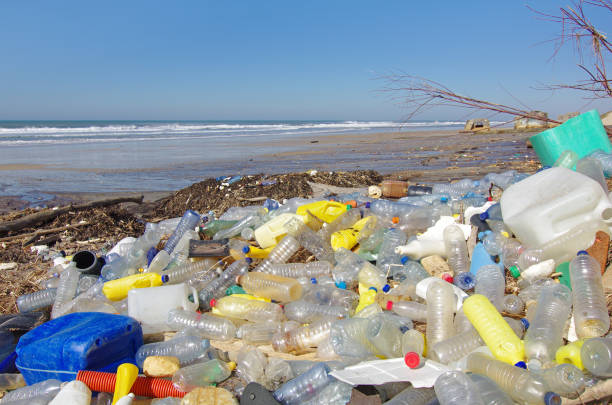
Plastic pollution is the accumulation of plastics in the environment that pose a threat to wildlife, their habitats, and human populations. It affects millions of people’s livelihoods, food production capabilities, and social well-being when plastic pollution alters habitats and natural processes, making ecosystems less adaptable to climate change.
Key Facts on Plastic Pollution

- In the last 20 years, 50% of all plastics have been manufactured.
- 2.3 million tons were produced in 1950, and 448 million tons were produced in 2015. By 2050, production will double.
- Plastic waste escapes from coastal nations into oceans every year in the amount of eight million tons. Every foot of coastline around the world would be covered in waste the size of five trash bags.
- Strength, flexibility, and durability are often improved by adding additives to plastics. In some cases, these additives can extend the life of products, with some estimates ranging up to 400 years.
The Problem of Plastic Pollution in Ocean Ecosystems
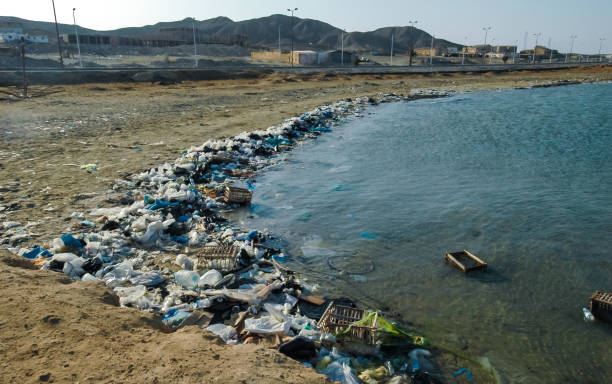
Between 4 and 12 million metrics of plastics enter the ocean yearly due to skyrocketing production, low recycling levels, and poor waste management – enough to cover every foot of coastline! In the next 20 years, that amount is expected to triple. Take a moment to absorb that.
Plastic pollution affects countless marine species and habitats in ocean ecosystems, including fish, seabirds, whales, turtles, and coral reefs. Nearly every seabird on Earth has eaten plastic during its lifetime, including nearly half of all sea turtles. Similarly, plastic pollution also pollutes otherwise beautiful beaches, coastlines, and diving and snorkeling sites around the world.
Studies published in the journal Science estimate that this constant barrage poses a danger to marine life. Because plastic has been broken down into tiny particles by the sea, animals can get entangled in it or ingest it, either because they mistake it for prey or because they mistake it for food.
Where do we Get Plastic Wastes from?

The amount of plastic trash we produce globally each year exceeds 300 million tons. The rest is burnt or thrown away, majorly ending up in dumpsites. However, only 9 percent of all plastic waste has ever been recycled.
It’s because 50 percent of manufactured plastics are single-use, which means it’s meant to be discarded after one use, such as straws, water bottles, and plastic bags. As a result of its frequent production and rapid disposal, single-use plastics contribute to landfill waste, which in turn contributes to evaporating waste into the atmosphere.
The Impacts of Plastic Pollution on Marine Life
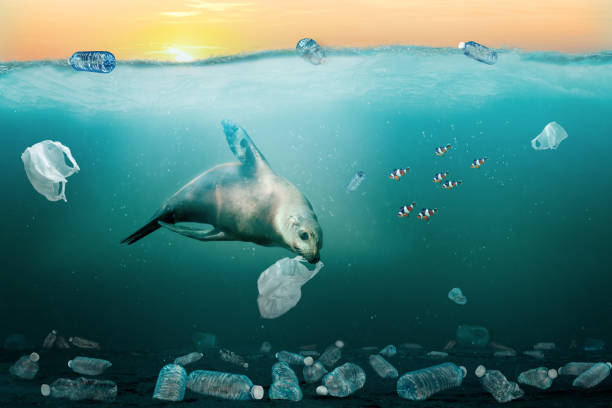
While plastic production and use are at their peak today, recycling rates are not very encouraging: we recycle only a small portion of what we produce. We either incinerate the rest, leading to air pollution, or we dump it into the ocean.
1. Endangers wildlife
Marine life and ecosystems are negatively affected by plastic pollution. Ingestion of plastic items results in suffocation, entanglement, laceration, infection, and internal injuries to animals, which is the most obvious one.
17 percent of the ocean’s species are threatened by plastic pollution, according to the U.N. Red List. Plastic poses yet another threat to marine ecosystems, biodiversity, and the food web: Invasive species can be transported by floating plastic items.
Plastic garbage floating in the sea can fool sea turtles into thinking it is food. Eating plastic can cause them to choke, sustain internal injuries, and even die – or they could starve to death thinking they are full.
- Seabirds ingest plastic in large numbers every year. As a result of plastic consumption, the stomach’s storage capacity is reduced, causing starvation. The number of seabird species eating plastic is estimated to reach 99% by 2050, with 60% having eaten pieces of plastic already.
- Plastic gets ingested and tangled up in the bodies of marine mammals. Hawaiian monk seals’ habitat, including pup nurseries, has been found to contain large amounts of plastic debris.
- It has been estimated that 12,000 to 24,000 tons are ingested by fish in the North Pacific each year and that plastic can cause intestinal injury or death to the fish and could even cause harm to humans who consume seafood.
2. Destruction of habitats
Coral reefs, mangroves, and seagrass beds are all habitats where plastic waste can accumulate. Many marine species lose vital nurseries and feeding grounds due to this accumulation, which can smother and disrupt these fragile ecosystems.
3. Chemical pollution
In addition to toxic chemicals, plastics absorb pollutants from their surroundings. These chemicals are released into the water when plastics break down into smaller fragments. As a result of exposure to these toxic substances, marine organisms may develop compromised physiological processes, have difficulty reproducing, and have weakened immune systems.
4. Ecosystem disruption
Ocean ecosystems can be disrupted by plastic pollution. Microplastics, for example, can negatively impact marine organisms’ behavior and reproduction, resulting in a decline in their population and a food web imbalance. As a result, fish populations can be reduced, and higher trophic levels may be impacted.
5. Climate change
Because plastic production is fueled by fossil fuels, plastic pollution and climate change are closely linked. Additionally, incineration of waste plastic releases methane and carbon dioxide into the atmosphere, contributing to global warming by increasing emissions.
6. Economic impacts
There is an estimated economic cost of $6-19 billion USD associated with plastic in oceans each year, according to research. As a result of its impact on tourism, fisheries, and aquaculture, as well as the clean-up efforts of the government, these costs are incurred.
How does Marine Plastic Pollution affect Different Species?
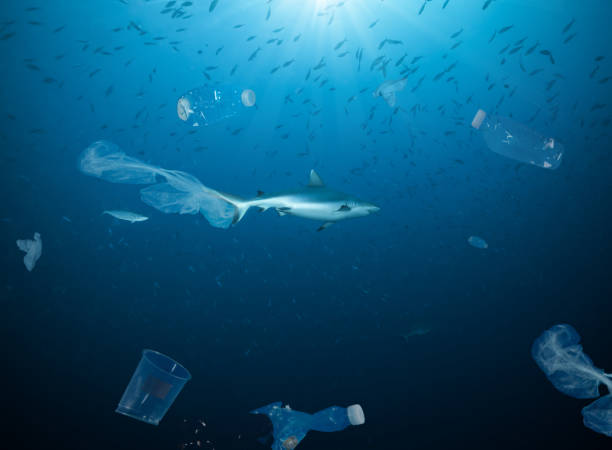
1. Megafauna and whales
Plastic entanglement is a serious concern for large marine mammals, especially ghost fishing gear. A variety of marine life, from blue whales to small crabs, can be trapped and entangled by discarded ropes, nets, and pots. In the United States alone, ghost gear entanglement kills approximately 300,000 dolphins, whales, and porpoises every year. Plastic pollution can also infect marine megafauna; a whale found in 2019 had 40kg of plastic bags in its stomach.
2. Seabirds
Fish and algae have been scooped up by seabirds from the ocean’s surface for millennia. Therefore, it comes as no surprise that some seabirds mistake small plastic fragments floating on the surface of the water for food. Suffocation and starvation can result from ingesting these tiny plastic pieces.
In some cases, seabirds can regurgitate plastic pieces, but others, such as petrels, cannot. In the North Sea, Northern Fulmars have been observed ingesting plastic pellets, so they are monitored as indicators of pellet pollution levels. Young seabirds are also fed plastic pieces by many species of seabirds. More than a million seabirds die every year as a result of plastic debris.
3. Sea turtles
When turtles see plastic, they think it is food. Fishing nets can resemble delicious seaweed, which leatherback turtles eat, and plastic bags can resemble jellyfish. Turtles can feel full when they consume plastic bags, leading to starvation.
There has been a recent study showing that all seven species of sea turtles in the Atlantic, Pacific, and Mediterranean oceans have traces of microplastic in their guts. The necks and shells of sea turtles can also become entangled in six-pack rings.
4. Molluscs and fish
Many fish species, including those humans eat, have been found to contain traces of microplastics. Over two-thirds of 500 fish species consumed plastic according to a study summarizing over 100 research papers. There is a common misconception among fish about plastic pellets being food.
Microplastics are taken in by mussels, oysters, and other mollusks as they filter seawater for food. Microplastic pieces were found in 100% of samples sourced from UK waters in a recent study.
5. Apex predators
The apex predator is the top predator in the food chain. Microplastics in the food chain and the bioaccumulation of toxic chemicals in plastics pose a major threat to marine apex predators such as great white sharks and orcas, yet this threat remains understudied. Several studies have found that a single plastic particle can accumulate more toxic chemicals than the surrounding water by up to a million times.
In animals that consume other contaminated species, chemical buildup occurs in the fatty tissues. Toxin concentrations increase as you move up the food chain. The breast milk and fatty tissues of orcas contain some of the highest levels of chemicals. There is a growing body of research examining how microplastic pollution contributes to toxic chemical biomagnification.
How Plastic Pollution Impacts Humans

The toxins contained in plastic break down inside marine animals when they consume it. Humans are also consuming these when they consume seafood. Hormonal abnormalities and developmental problems are linked to some of these plastic toxins.
It is still unclear how plastic consumption through fish and shellfish affects our health. Several studies have concluded that microplastics do not pose a health risk to humans. However, there are still many things we do not understand.
Nano-plastics, which are so small that they can enter human cells when consumed, degrade ocean ecosystems eventually, resulting in plastics in oceans. The health effects of micro- and nano-plastics were called for more research in 2019.
Solving the Problem of Plastic Pollution
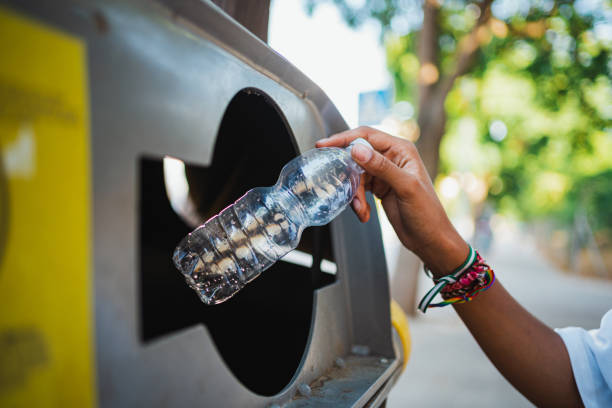
With plastic pollution on a global scale, removing plastic from the environment would be very costly. It is therefore common practice to prevent improper disposal of plastics, and even reduce the use of some plastics in the first place.
It has been hard to properly enforce penalties for littering, however, other charges and bans are now common for plastic bags and food containers, and reward systems for taking plastic bottles to recycling locations. Manufacturers are responsible for using eco-friendly packaging materials and creating a system that allows their products to be taken back and recycled under extended producer responsibility schemes.
A growing public and government awareness of plastic pollution is leading to the adoption of innovative solutions, such as using more biodegradable plastics and adopting a “zero waste” philosophy.
The Importance of Preventing Plastic Pollution
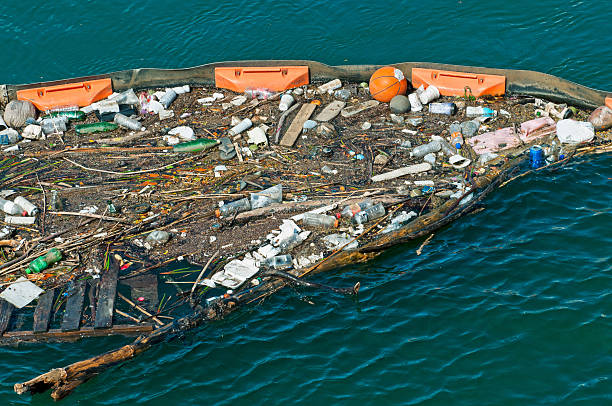
Global cooperation is undoubtedly needed to address plastic pollution. As a result of its consequences, the health of the oceans, the health of marine species, the safety of food, the health of humans, coastal tourism, and the climate are all threatened.
Plastic pollution in our oceans not only affects wildlife and ecosystems but also impacts our health and the environment, contributing to carbon footprints and helping us move towards a sustainable future. By reducing the presence of plastic in our oceans, we will save marine species and ecosystems.
Conclusion
To reduce plastic pollution in the sea, consumers should reduce their use of single-use plastics. It is also important to recycle plastic whenever possible. Taking part in beach and river clean-ups reduces the amount of plastic that makes its way into the ocean by volunteering. As well as supporting campaigns to decrease plastic production, policy changes are required.







